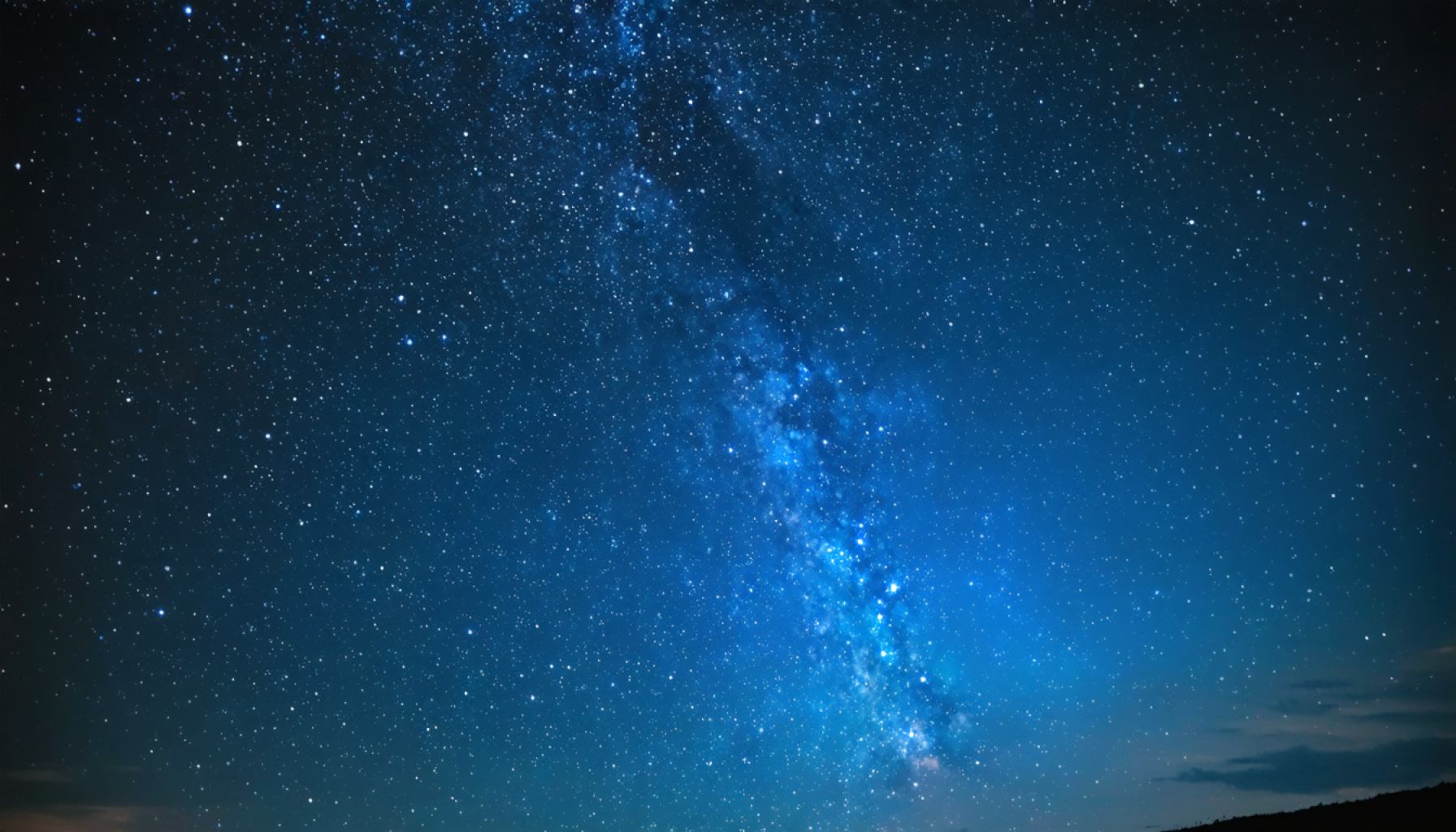
- Jupiter and the crescent moon create an early April spectacle, visible in the western sky from April 1-3.
- Mars aligns with the moon on April 4-5, with the Gemini twins adding brilliance in the southwest.
- The Pink Moon peaks on April 12-13, offering a silvery glow symbolic of spring’s renewal.
- The Lyrids Meteor Shower shines from April 15-30, peaking on April 21, with up to 18 meteors per hour.
- Venus, Saturn, and the moon form a celestial trio in the eastern sky at dawn from April 23-25.
- Zodiacal light, a conical glow, may be visible in clear skies, enhanced by the Pleiades cluster.
- April’s weather is unpredictable, inviting stargazers to enjoy warmer nights despite potential spring storms.
April directs its cosmic symphony in the night skies, turning every casual stargazer into a spellbound astronomer. The heavens offer a plethora of breathtaking spectacles this month: meteor showers, planetary dances, and ethereal glows invite everyone to look up and immerse themselves in the mysteries of the universe.
As twilight descends, Jupiter takes the stage first, aligning gracefully with the crescent moon from April 1 to April 3 in the western sky. This celestial duo illuminates the night, casting a soft glow that commands attention. Once Jupiter makes its exit, Mars twirls in, partnering with the moon on April 4 and April 5. Look southwest during these nights to also glimpse the Gemini twins, Pollux and Castor, adding their stellar brilliance to the cosmic dance.
Come mid-April, the night sky will be draped in the silvery luminescence of the Pink Moon, traditionally named after the early bloom of springtime flowers. Mark April 12 and 13 for the full moon’s apex, when its glow will shine brightest, creating an awe-striking spectacle reflective of spring’s promise.
Yet, the highlight of this celestial display is undoubtedly the Lyrids Meteor Shower. From April 15 through April 30, shooting stars streak across the sky in an entrancing display of speed and light, peaking on the night of April 21. With optimal viewing conditions, NASA suggests up to 18 meteors per hour might grace the skies, marking a continuation of a spectacle that has enchanted humans for over 2,700 years.
Towards the later days of the month, the eastern horizon unveils a trio of celestial bodies—Venus, Saturn, and the moon—greeting dawn seekers from April 23 to April 25. As predawn light weaves through constellations, the celestial triad frames the sky, creating an exquisite tableau of planetary theater.
Moreover, April offers a fleeting yet fascinating phenomenon: the zodiacal light. On exceptionally dark and clear evenings, a conical glow might be visible in the western sky, a cosmic tapestry of interstellar dust reflecting sunlight, sometimes enchanted by the presence of the Pleiades cluster.
This April, the unpredictable spring weather plays both friend and foil. As temperatures rise, the warmth invites night-time revelries under open skies. However, the weather remains mutable, particularly in Southern and Plains states, where spring storms loom large.
April’s celestial showcase is not just a festival for the eyes; it is an invitation to reconnect with the vast cosmos. The opportunity to witness these astronomical events encourages a deeper appreciation of our world and our place within the celestial sphere. So, pull on that jacket, step outside, and let April’s sky guide you through a spectacular journey among the stars.
Unlock the Mysteries of April’s Night Sky: A Cosmic Dance You Can’t Miss!
April’s night sky offers more than just a collection of twinkling stars—it promises a vibrant celestial showcase that captivates both seasoned astronomers and casual stargazers. Dive deeper into this month’s cosmic events and discover exciting insights, practical tips, and engaging stories about the breathtaking spectacles overhead.
Real-World Use Cases: Perfecting Your Star-Gazing Experience
If you’re eager to make the most of this celestial theater, here’s how:
– Jupiter and Mars Showcase: Start your astronomical adventure between April 1-5. Use binoculars to enhance your view of Jupiter’s details alongside the delicate crescent moon. Track Mars as it mingles with the moon, and see if you can spot the Gemini twins, Pollux and Castor.
– Pink Moon Viewing: On April 12 and 13, look for an unobstructed horizon to observe the Pink Moon rising. Its brightness is ideal for photography—consider using a tripod to capture its full glory.
– Lyrids Meteor Shower Highlights: Maximize your meteor-watching experience on the night of April 21. Find a dark location away from urban light pollution for the best viewing conditions. Lie flat on your back and allow your eyes to adjust to the darkness for at least 30 minutes to spot up to 18 meteors per hour.
– Morning Planetary Trio: Venture out in the early hours from April 23-25 to catch the rare alignment of Venus, Saturn, and the moon. A tripod-mounted telescope will provide awe-inspiring close-ups.
Insights & Predictions: April’s Celestial Surprises
This month is particularly significant for those interested in the subtle zodiacal light. This ghostly glow becomes visible only in areas with minimal light pollution, providing a glimpse into the vast interstellar dust scattered across our solar system.
Moreover, as technology continues to evolve, augmented reality star-gazing apps like SkyView and Star Walk 2 can enhance your experience by providing real-time information on constellations and celestial events directly on your smartphone screen.
Controversies & Limitations: Navigating the Challenges
While the night sky is a source of wonder, it also poses challenges:
– Weather Conditions: April’s unpredictable weather can be an obstacle for stargazers. Check local forecasts and be prepared for sudden changes, especially in regions prone to spring storms.
– Light Pollution: Urban areas suffer from light pollution, diminishing the visibility of celestial events like the zodiacal light and meteor showers. Consider journeying to designated dark-sky parks for optimal viewing.
Actionable Recommendations: Tips for Stargazing Success
1. Prepare in Advance: Gather essentials like a blanket, warm clothing, snacks, and a star map or app to guide your journey.
2. Join a Stargazing Group: Many local astronomy clubs offer guided star parties, providing both expertise and equipment you might not have.
3. Timing is Everything: The best viewing times are often late evening or early morning. Plan your schedule around the events that interest you the most.
4. Capture the Moment: Use a camera with manual settings to experiment with long-exposure photography. This can capture stunning images of meteor trails and star clusters.
Conclusion: Let April’s Night Sky Inspire You
April’s celestial events not only dazzle but also offer an invitation to ponder our place within the universe. Whether you’re navigating the cosmos for the first time or are a seasoned stargazer, the cosmic phenomena of this month are not to be missed.
For more about astronomy, its wonders, and tools to enhance your night sky experiences, visit NASA’s official website.
Prepare to be amazed, and let the universe reveal its timeless mysteries.



